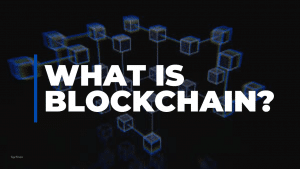Post Views: 34
Most people may not know that Bitcoin is about to undergo a very important process called the halving, which is set to happen around April 20th.
This event happens every four years, and outside the approval of the spot Bitcoin exchange-traded funds (ETFs), which recently occurred this year, it is arguably the most anticipated and looked-forward-to event in all of Bitcoin’s history.
This article will provide loads of technical information to get you up to speed so you can understand precisely how it happens, why it happens, and, most importantly, what will happen to Bitcoin’s price.
What Is The Halving?
The halving is an event that will cut the production rate of Bitcoin by half. In other words, it will become twice as expensive to mine one Bitcoin.
Satoshi Nakamoto, the pseudonym for Bitcoin’s creator, made this part of its central design to counterbalance the inflationary forces of fiat or government-issued money.
So, unlike fiat currencies, which are printed more and more every year, creating inflation and rising prices, Bitcoin was designed to have the opposite effect by issuing less and less of itself every four years through a process called Proof-of-Work.
Proof-of-Work Consensus Mechanism
To understand why this happens, we must understand how Bitcoins are created. Unlike the central banking system, which has a group of people who decide how much money gets added to the circulating supply, Bitcoin, on the other hand, is created as a function of a consensus mechanism.
A consensus mechanism is just a fancy way of saying “to agree on the state of things” because we must agree on how many Bitcoins you and I have.
Developers have devised a couple of really interesting ways to do that. Ethereum, for example, uses Proof-of-Stake, which means that if you have enough money locked up, you can help validate transactions.
The deeper you go down the rabbit hole, the more you will realize there are many ways to agree on the state of things. However, Bitcoin uses a consensus mechanism based on Proof-of-Work to solve complex mathematical equations.
The downside of Proof-of-Work is that it uses a lot of electricity, is slow, and is not super efficient. However, the trade-off is that it is incredibly secure, which is why it’s such a good fit for the application of value or money that makes Bitcoin.
Block Rewards
Now, how do you incentivize people to work on solving these puzzles? And why would anyone buy these expensive, loud, hot machines that use a lot of electricity?
The answer to that is “block rewards.” A block and its rewards are created on Bitcoin every ten minutes. So, think of it as a bus stop; every ten minutes, a bus comes along and then takes off, and another takes place. Now, if you want to get on the bus (in other words, if you want your transaction to get included on the blockchain), you must bribe the bus driver. But if you don’t bribe him enough money, you might get stuck at the bus stop waiting for the next bus, and that means your transaction gets stuck in what is called the “mempool,” which can take several days.
You can check right now for yourself how often people are transacting on the Bitcoin blockchain. Right now, there are over 3,000 transactions every 10 minutes. If you zoom out and look at the longer time frame, you will see that Bitcoin transactions have grown significantly since it was first created.
So, all in all, Bitcoin makes one block every 10 minutes, which is six blocks per hour. Multiply this by 24 hours a day, which is 144 blocks per day; this number is constant and will never change. What’s not constant and was designed to change since the birth of Bitcoin was the block reward, which happens every four years or exactly every 210,000 blocks.
Additionally, here’s the obscene amount Bitcoin pays its miners to keep the network safe. Right now, each block rewards miners 6.25 Bitcoins for their work, and today’s price of $70,000 per Bitcoin is $437,000 per block. So, that is 900 Bitcoins per day multiplied by $70,000 per Bitcoin, which is equivalent to $63 million being paid out to miners every single day, but all of that is about to change.
Previous Bitcoin Halvings
Here’s a quick history of all the halvings that have happened:
2012
In 2012, we got the first one where the block reward was cut from 50 BTC down to 25 BTC or 3600 coins per day.
2016
Then, in 2016, we got the second one, which reduced it from 25 BTC to 12.5 BTC, or 1,800 coins per day.
2020
In 2020, we are at a current production rate of 900 BTC per day.
2024
Around April 20th, it will be cut in half again to 450 BTC per day or 3.125 coins per block.
What Happens After The Halving?
It Becomes Twice As Expensive For Miners To Secure The Network
Imagine you go to work and your employer pays you 50% less for doing the same amount of work as you did before. 50% of people would at least quit on the spot. If that happens to Bitcoin like it is about to do on April 20th, only the most efficient miners will stay on the network. That is because it does not make sense to continue mining if the cost of hardware and electricity is higher than the cost of Bitcoin.
So, when those miners leave, the difficulty of solving the blocks automatically adjusts downward by design. Therefore, Bitcoin’s mining difficulty depends on the hashing power; the difficulty increases when there are more people, and it adjusts downwards when there are fewer people.
The Bitcoin Miners Continuing To Mine Start Selling Their BTC At A Slower Pace
The miners who remain on the network would wait until there is an equilibrium between the market price of Bitcoin and the price to mine a Bitcoin.
Estimates show that mining Bitcoin costs $40,000 in electricity and hardware. However, after the halving on April 20th, estimates say it will double to around $80,000.
Now, the market price of Bitcoin and the cost of mining Bitcoin do not always reach that equilibrium right away. Eventually, the price of Bitcoin tends to exceed the cost of mining.
That is precisely where we are today. If it costs $40,000 to mine, but it’s $70,000 in market price, some people will say Bitcoin is slightly overvalued. The people holding on to it believe it will be worth a lot more, so they think it is worth holding on and buying even at higher prices.
Miners Would Only Mine 450 BTC Per Day
The third thing is that miners would only mine 450 BTC per day. That number is interesting because the ETFs from a company like BlackRock recently bought over 10,000 Bitcoins, while only over 3,000 BTC are mined weekly.
So, the demand from one ETF issuer like BlackRock is outpacing demand, and that is just from one ETF issuer. Many others are also investing in Bitcoin outside the ETFs, so there is more demand than supply, at least for now.
Bitcoin’s Price After The 2024 Halving
[embedded content]
The truth is, no one knows what will happen after the halving. Bitcoin may crash several days before, like in 2020, when it crashed 17% a few days before the halving. However, it could also crash several days later, like in 2016, when it dropped 29%.
However, something completely new may happen during this halving because this is the first time in Bitcoin’s history that its price has reached an all-time high before the halving has even occurred.
Some will look at this and conclude that the next bull run will be more significant. Other people are skeptical and say that the market is getting smarter, anticipating what will happen and that the price will go down and sell off.
Final Thoughts
Halving events are not just about the price of Bitcoin; they are about protecting the network’s overall health by incentivizing miners and binding every participant to this strict set of rules that can never be manipulated.
But each halving is, without a doubt, the best time ever to buy Bitcoin, historically speaking, anyway.
Via: 2Usethebitcoin.com










